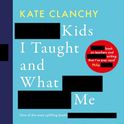“Slaughtered in school”
“And still no gun control?”
“How come, Marco Rubio?”
Two days after the shootings at Marjory Stoneman Douglas High School in Parkland, Florida, which left 17 people dead and many more injured, three billboards showed up.Sponsored by the online activist group Avaaz, the billboards, which were mounted on three trucks, confronted Senator Marco Rubio’s failure to support a ban on assault weapons, in three parts.
To those of us who have seen the much-lauded and award-nominated film Three Billboards Outside Ebbing, Missouri, the syntax is familiar.
In the film, Mildred Hayes (Frances McDormand) is a mother grieving for her raped and murdered teenage daughter. Furious at police inaction regarding the case, she resorts to direct action. Hayes hires three billboards that can be seen prominently outside the town and uses them to try and force the local police chief to reopen the case. They read:
“Raped while dying”
“And still no arrests?”
“How come, Chief Willoughby?”
There is nothing subtle about these billboards. The language they use, in its sheer force, is disruptive. “Raped while dying”; “Slaughtered in school”. Such phrasing is impossible to ignore. It conjures horrific, graphic mental images.The film itself addresses this, when Hayes’ son Robbie furiously points out that he would rather not be reminded of the brutal nature of his sister’s death every time they drive by in the car. The billboards demand that everyone—whatever their relationship to the victim(s)—bear witness, long after most eyes have turned away from the injustice they address. In the film, this splits the community. People do not always react well to being forced to look.
Perhaps this is why, that same week, community coalition Justice4Grenfell also used three truck-mounted billboards to draw attention to inaction. They drove around the city, finally stopping at the Grenfell site. This time, the refrain was:
“71 dead”
“And still no arrests?”
“How come?”
No individuals have yet been held accountable for Grenfell. A report has concluded that there are no reasonable grounds for corporate manslaughter charges to be brought. In the days following the tragedy, there was much soul-searching regarding Britain’s failure to provide safe homes for its most vulnerable citizens, for the shortcuts taken and the fobbings off of residents that eventually led to these appalling deaths. But now the cameras of the world have largely turned away. What better way to seize their attention again?https://twitter.com/officialJ4G/status/964110119347867650
The repeated use of three billboards by protest groups is more than a mere publicity stunt inspired by a popular Hollywood film. It is a sign of how that film has come at a time when our societies are interrogating the abuse of power, and its impact on those who are powerless, like never before.
In this age of #MeToo, we have become all too aware of how organisations, governments and societies facilitate the harm in order to pursue their own interests. It is, in many ways, an uncomplicated realisation that suits an uncomplicated form of protest art—more of a Jenny Holzer approach than Ai Weiwei.
You don’t need to be well versed in conceptual art to understand the simplicity of the words which confront the viewer, though those who are in the know might remark on how the preoccupation with language echoes the conceptual artists of the 1960s. See Lawrence Weiner’s Declaration of Intent (1968):
1) The artist may construct the piece.
2) The piece may be fabricated.
3) The piece need not be built.
The rule of three (or omne trium perfectum) tells us that ideas expressed in threes are more effective; more easily memorised. So we have “Liberté, égalité, fraternité”, “the Father, the son, and the Holy Spirit”, and an “Englishman, an Irishman, and a Scotsman.”In Three Billboards, Mildred Hayes knows this instinctively. Three billboards are so much more difficult to ignore than one. “The more you keep a case in the public eye, the better your chances are at getting it solved”, Hayes argues. At a time when socially and politically we are confronting abuses of power both past and present, it is no surprise that activists are resorting to this tactic.
At the tail end of last year, I interviewed Margaret Aspinall, whose son, James was 18 when he died at Hillsborough.
When she was taken to see his body, she was not even allowed to hold her son for one last cuddle. She fought for over 30 years to have the verdict of accidental death overturned, not just for her son, but on behalf of all the other families, and finally achieved her goal in 2016. Though completely ravaged by grief, her determination to win justice saw her triumph in the end.
She drew parallels between Grenfell and Hillsborough, telling me: “My advice to others fighting for justice is don’t listen to anybody, listen to your own instincts. If your own instincts say this was morally wrong, never walk away no matter what they offer you. Tell them, no, things have got to change.”
I thought of Margaret when I watched Three Billboards, of her determination to see the truth out. I wonder what three Hillsborough billboards might have achieved, if anything at all. In an age before digital photography and social media, the Hillsborough families had to fight indefatigably to keep their campaign in the public consciousness.
These days, thankfully, those who have suffered as a result of societal indifference, or even active malice, are much, much more difficult to ignore.












